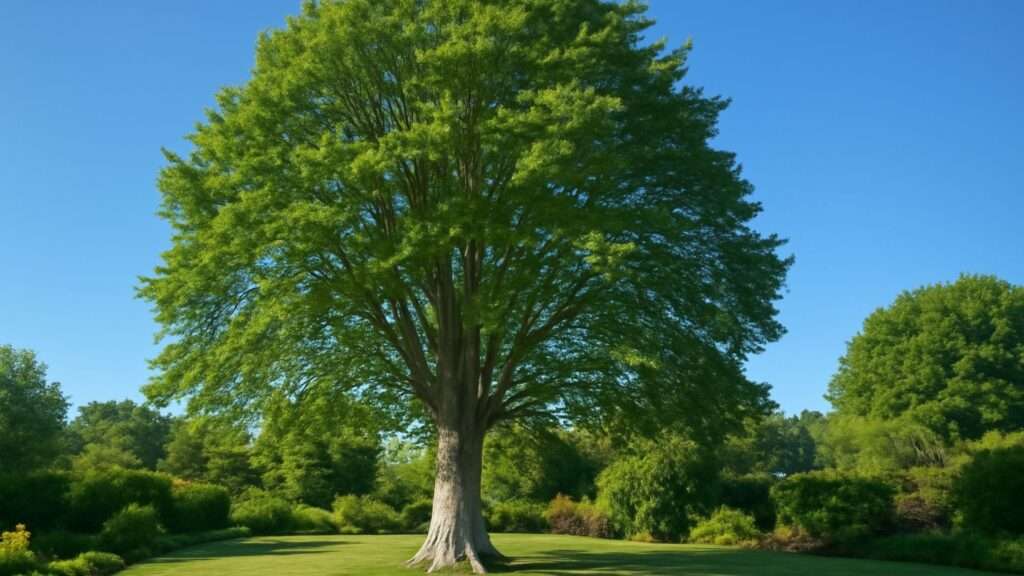
Michigan Beech Tree Care: Essential Tips for Healthy Growth and Longevity
Have you ever dreamed of adding a beautiful Michigan Beech tree 
In this guide, we’ll explore the essential tips for caring for your Michigan Beech tree, from choosing the right planting site to providing proper soil, water, and protection from pests. Whether you’re planting a new tree or nurturing an established one, you’ll find everything you need to ensure its health and longevity. Keep reading to unlock the secrets of a flourishing Michigan Beech tree!
Table of Contents
ToggleUnderstanding the Michigan Beech Tree 
The Michigan Beech Tree (Fagus grandifolia), native to North America, is a majestic species admired for its beauty and long lifespan. Known for its smooth, silver-gray bark and vibrant green leaves, the tree adds character to any landscape. However, understanding its growth habits and specific care needs is essential for helping it thrive in your garden or backyard.

Key Characteristics 
The Michigan Beech is a deciduous tree, meaning it sheds its leaves in the fall. It grows slowly, reaching heights of 50 to 70 feet when mature. The tree’s dense, dark green foliage turns golden-yellow in the fall, creating a beautiful seasonal transformation. Its bark, smooth and silvery, can be one of the tree’s most striking features, offering a unique touch to any setting.
Growing Requirements 
This tree thrives in rich, well-drained soil with a slightly acidic pH. While it can tolerate a variety of climates, Michigan Beech trees grow best in areas that receive full sunlight to partial shade. Regular watering is key, especially during dry spells, but be sure to avoid waterlogged soil.
Why Choose the Michigan Beech Tree? 

Beyond its aesthetic appeal, the Michigan Beech is also a low-maintenance tree that can last for centuries. It is highly resistant to pests and diseases, making it an ideal choice for beginner gardeners. Whether you’re looking to add shade or an eye-catching feature to your garden, the Michigan Beech Tree is a reliable and gorgeous addition.
By understanding these essential aspects of the Michigan Beech, you’ll be better equipped to provide it with the care it needs to grow strong and healthy, ensuring its longevity for years to come.
Choosing the Right Location for Your Michigan Beech Tree 
Selecting the perfect spot for your Michigan Beech tree is crucial for its health and longevity. Beech trees thrive in specific conditions, and ensuring they have the right environment will lead to a strong, vibrant tree for years to come. Here are some key factors to consider when choosing a location:
1. Sunlight 
Michigan Beech trees prefer full sun to partial shade. Ideally, they should receive at least 4–6 hours of direct sunlight daily. However, if you live in a warmer climate, some afternoon shade may help protect the tree from heat stress. The more sunlight they receive, the healthier and more robust the tree will grow!

2. Soil Quality 
Michigan Beech trees flourish in rich, well-drained soil. They prefer slightly acidic to neutral soil pH (around 5.5 to 6.5). It’s essential to choose a location with soil that retains moisture but doesn’t become waterlogged. To test your soil’s drainage, dig a small hole and fill it with water. If it drains slowly, you may need to amend the soil with organic material to improve drainage.
3. Space for Growth 
Beech trees can grow quite large, reaching up to 50 feet tall and 40 feet wide. Therefore, it’s important to plant your tree in an area where it has enough space to spread its roots and canopy. Avoid planting too close to buildings, fences, or other trees. A clear, open area will allow the tree to grow freely and stay healthy.
4. Protection from Wind 
Although Michigan Beech trees are sturdy, strong winds can damage young trees and affect their growth. Planting your tree in a sheltered spot, like near a wall, fence, or a grove of other trees, can provide protection from harsh winds while it establishes itself.
5. Watering Considerations 
Michigan Beech trees enjoy consistent moisture but don’t like to be waterlogged. Select a location where the tree will have access to regular watering, such as near a natural water source like a stream or a pond. However, make sure the ground doesn’t stay soggy for long periods, as that can lead to root rot.
6. Avoiding Root Competition 
Be mindful of nearby plants that may compete for nutrients and water. Avoid planting your Michigan Beech tree near other large trees with extensive root systems. Consider the tree’s root zone when selecting its planting site to ensure it has room to thrive.
By choosing the right location, you’re giving your Michigan Beech tree the best chance to grow tall, healthy, and resilient. Make sure to plan ahead and consider these factors to ensure a thriving tree for generations!
Watering and Irrigation Tips for Healthy Growth 

Proper watering is essential for the health and longevity of your Michigan Beech tree. When it comes to keeping your tree hydrated, striking the right balance is key—too little or too much water can both be harmful. Here’s how to ensure your tree gets the perfect amount of hydration:
1. Water Deeply, But Infrequently
Michigan Beech trees prefer deep watering rather than frequent, shallow watering. This encourages the roots to grow deeper into the soil, which makes the tree more drought-resistant. Aim to water your tree once a week during dry spells, ensuring that the water penetrates at least 6-8 inches below the surface.

2. Check Soil Moisture Before Watering
Before watering, check the soil moisture around the base of the tree. Stick your finger about 2 inches into the soil. If it feels moist, hold off on watering. If it’s dry, it’s time to give your tree a drink. This helps prevent overwatering, which can lead to root rot.
3. Water at the Right Time
The best time to water your Beech tree is early in the morning or late in the evening when temperatures are cooler. This allows the water to soak in without evaporating too quickly under the hot midday sun.
4. Mulch Around the Base
Adding a layer of mulch around the base of your tree will help retain moisture and regulate soil temperature. Mulch also prevents weeds that can compete for water and nutrients. Just be sure to leave a gap around the tree trunk to avoid rot.
5. Use Drip Irrigation or Soaker Hoses
Drip irrigation systems or soaker hoses can be a great way to ensure consistent watering. These methods deliver water directly to the root zone, minimizing water waste and reducing the risk of wetting the tree’s leaves, which can lead to fungal diseases.
6. Consider the Weather and Season
In the spring and fall, when rainfall is more frequent, your Beech tree may need less water. However, during hot summer months, it will require more frequent hydration. Always adjust your watering schedule based on the weather conditions.
By following these simple tips, you’ll help your Michigan Beech tree thrive for many years to come! Happy gardening!
Soil Care and Fertilization for Your Michigan Beech Tree 
Proper soil care and fertilization are crucial to ensuring the long-term health and vitality of your Michigan Beech Tree. Here’s how you can keep the soil in top condition for your tree’s growth:
1. Soil Type & Drainage 
Michigan Beech Trees thrive in well-draining, loamy soil. Ensure that the soil is rich in organic matter, as it helps retain moisture and provides essential nutrients. If your soil is too sandy or clay-heavy, consider amending it with compost or organic mulch. Proper drainage is key—avoid waterlogging, which can lead to root rot. Make sure the soil pH stays between 5.5 and 6.5 for optimal growth.
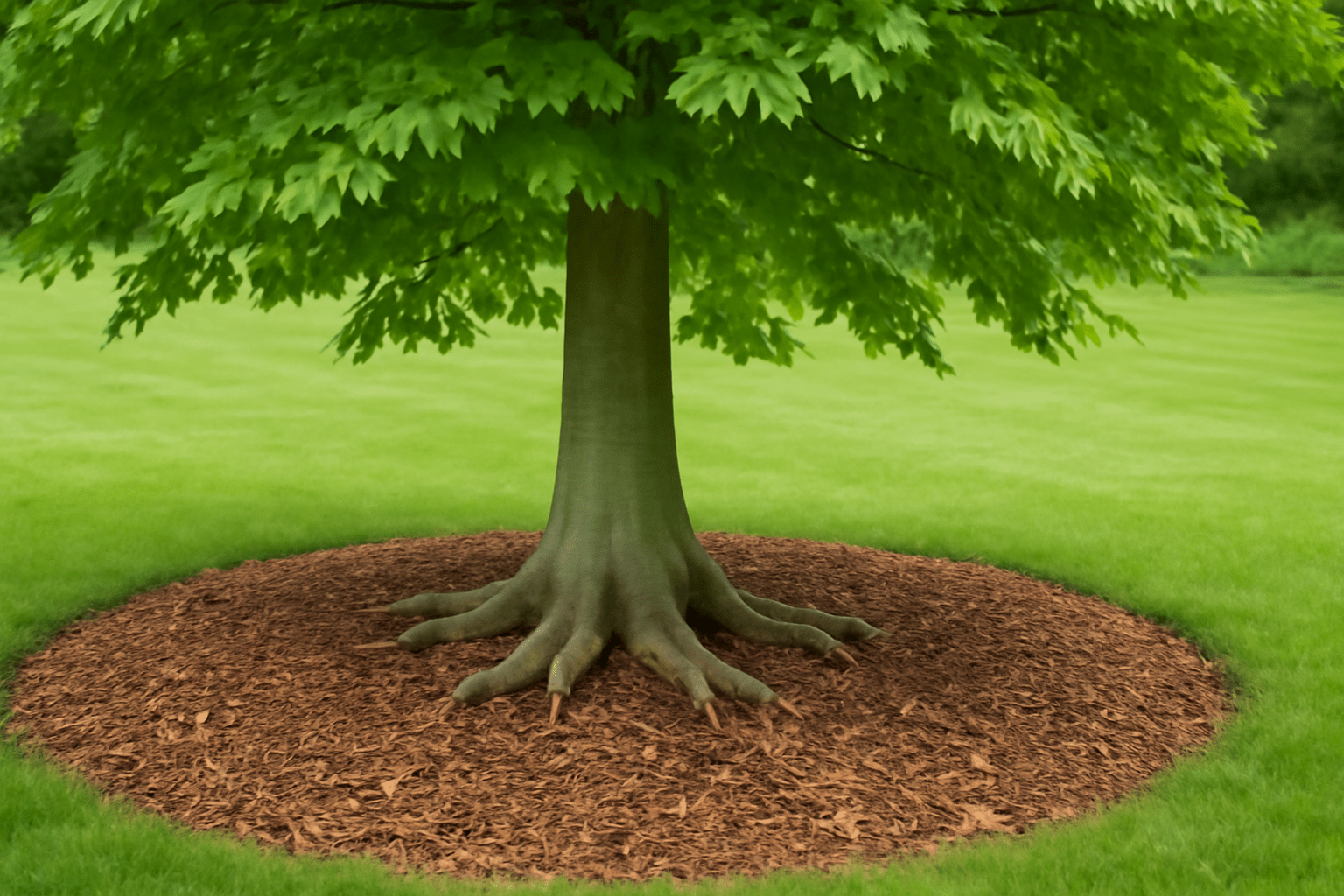
2. Fertilization Schedule 
Beech trees don’t require heavy fertilization, but providing the right nutrients at the right time helps boost growth. A light application of balanced fertilizer (like 10-10-10) in early spring, just before new growth begins, will give your tree the necessary nutrients. If your tree is struggling or you notice yellowing leaves, a slow-release fertilizer with higher nitrogen content can be applied in late spring. Always follow the instructions on the fertilizer label to avoid overfeeding.
3. Organic Mulching 
Adding a 2-3 inch layer of organic mulch around the base of the tree not only helps retain moisture but also keeps the soil temperature stable. Organic mulch like wood chips, bark, or compost will decompose over time, enriching the soil. Just be sure to keep the mulch a few inches away from the trunk to prevent fungal infections.
4. Soil Aeration 
To keep the soil well-aerated and promote healthy root growth, consider periodically loosening the soil around your tree. You can use a garden fork to gently aerate the soil without disturbing the roots. This will improve the penetration of water and nutrients, keeping the roots healthy and strong.
5. Monitor Soil Moisture 
Consistent moisture is essential for Michigan Beech Trees, especially during dry spells. However, soggy soil can lead to root problems. It’s best to water deeply and infrequently rather than shallow, frequent watering. A moisture meter can be a helpful tool to gauge the soil’s water level, ensuring it’s not too dry or too wet.
By following these simple soil care and fertilization tips, your Michigan Beech Tree will flourish, providing you with a beautiful, healthy addition to your landscape for years to come!
Pruning and Maintenance for a Strong, Healthy Tree 
Pruning and regular maintenance are essential for the health and longevity of your Michigan beech tree. Not only does it help shape the tree for better growth, but it also prevents diseases and encourages stronger branches.
1. When to Prune 
The best time to prune your Michigan beech tree is during late winter or early spring before new growth starts. This ensures that the tree can heal quickly, reducing the risk of infections. Avoid pruning in the fall, as it can stimulate new growth that won’t survive the cold winter months.
2. What to Prune 
Start by removing dead, diseased, or broken branches. These not only hinder healthy growth but can also invite pests and disease. Focus on cutting branches that cross each other or grow inward, as they can cause the tree to become crowded. Aim for an open, airy structure to improve airflow and sunlight penetration.
3. How to Prune 
Make clean cuts at a slight angle to encourage faster healing. Use sharp, well-maintained pruning shears or saws to prevent tearing the bark. Always prune close to the main stem or branch collar, but never flush with the trunk. This helps the tree seal the wound properly.
4. Regular Maintenance 
In addition to pruning, keep an eye on your tree’s overall health. Regularly inspect the tree for signs of pests, diseases, or fungal growth. Water the tree deeply during dry spells to ensure the roots stay hydrated. Mulching around the base can help retain moisture and protect the roots from temperature extremes.
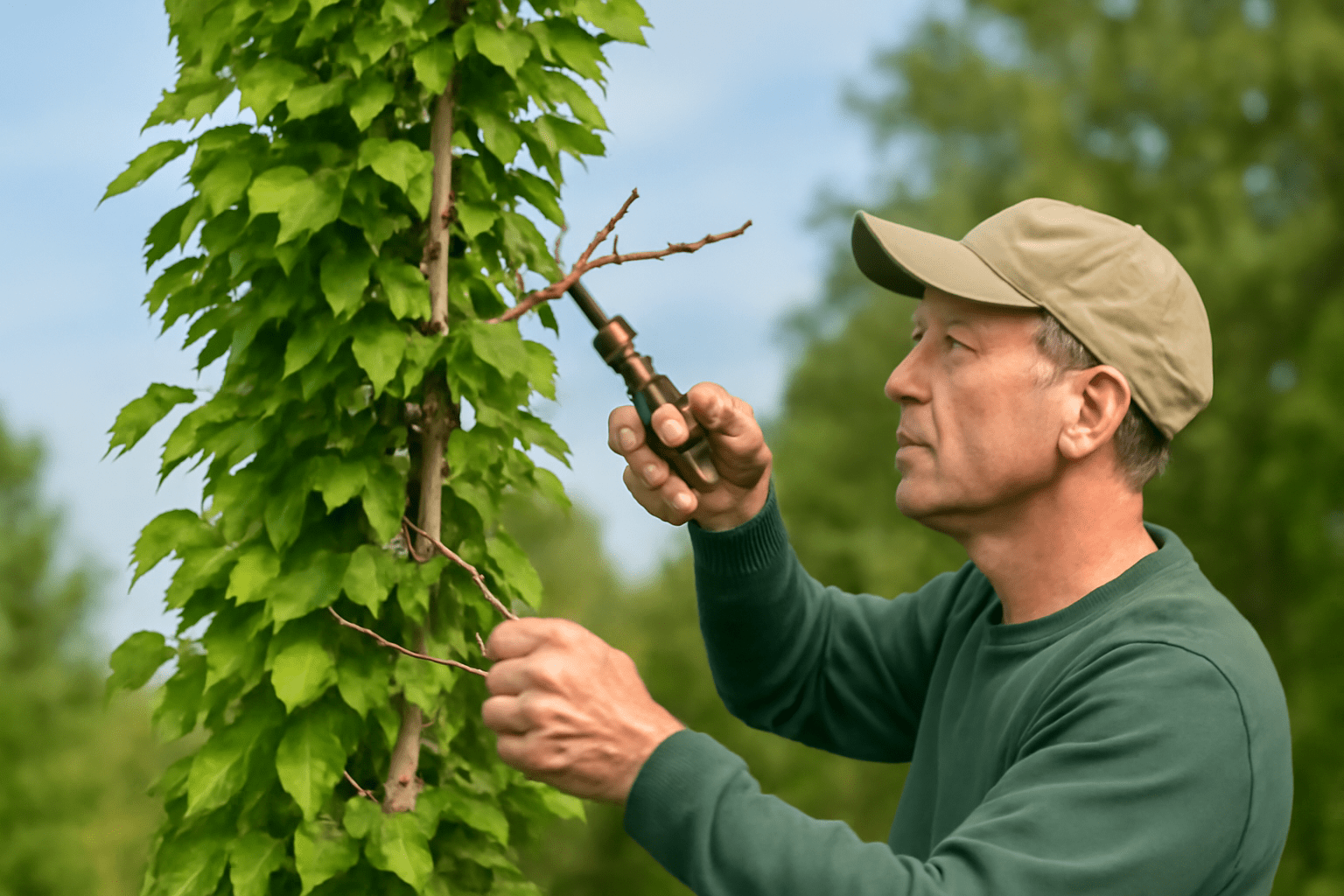
5. Avoid Over-Pruning 
While pruning is essential, be careful not to overdo it. Removing too much foliage can stress the tree and stunt its growth. Stick to removing no more than 20-30% of the tree’s canopy at a time.
By following these pruning and maintenance tips, your Michigan beech tree will remain healthy, strong, and beautiful for many years to come!
Protecting Your Michigan Beech Tree from Pests and Diseases 

Michigan Beech trees are beautiful, resilient, and relatively low-maintenance. However, like any tree, they can be vulnerable to pests and diseases that can impact their health. Here’s how you can protect your tree and ensure it thrives year after year.
1. Monitor for Pests Regularly 
The first step in pest control is monitoring your tree closely. Keep an eye out for common pests like Japanese beetles, aphids, and scale insects. These pests can damage your tree by feeding on its leaves or bark, leading to stunted growth or even tree death if left unchecked.
Tip: Look for holes in the leaves, sticky residue (from aphids), or discolored bark. If you spot any of these signs, take action promptly.
2. Use Organic Pest Control Methods 
If you notice pests on your tree, consider using organic treatments like neem oil or insecticidal soap. These solutions are gentle on the environment and effective in controlling pests without harming beneficial insects.
Tip: Apply these treatments in the early morning or late evening when the tree isn’t under direct sunlight to avoid leaf burn.

3. Prune Damaged Branches 
Regularly prune dead or damaged branches to prevent the spread of diseases like beech bark disease (caused by fungi and insect infestation). Pruning improves airflow, reducing the risk of fungal infections.
Tip: Always use sharp, clean pruning tools to minimize stress on the tree. Make cuts at a slight angle to help water drain away from the wound.
4. Avoid Overwatering 
Overwatering can lead to root rot, a fungal disease that weakens the tree and makes it more susceptible to pests. Be sure your Beech tree is planted in well-drained soil and avoid watering excessively.
Tip: Water the tree deeply once a week during dry periods but ensure the soil is allowed to dry out slightly between watering sessions.
5. Fungicide for Disease Prevention 
To prevent fungal diseases such as beech bark disease, consider applying a preventive fungicide during early spring or fall when the tree is dormant. These treatments can help protect the tree from harmful fungi that might otherwise infect it.
Tip: Always follow the manufacturer’s instructions for application to avoid harming your tree.
6. Keep the Area Clean 
Fallen leaves and debris around your tree can harbor pests and fungi. Rake up leaves and remove any dead plant matter from around the tree base to reduce the risk of pests and disease.
Tip: Compost the leaves to keep the area tidy or dispose of them properly to eliminate potential breeding grounds for harmful organisms.
7. Promote Tree Health with Mulch 
A layer of organic mulch around the base of the tree helps retain moisture and prevent weed growth. It also provides a healthy environment for beneficial microorganisms, which can fight harmful pests and fungi.
Tip: Keep the mulch a few inches away from the tree’s trunk to avoid moisture buildup near the bark, which can encourage rot.
By taking these preventive steps, you can ensure your Michigan Beech tree remains strong, healthy, and pest-free. Regular monitoring and early intervention are key to keeping your tree thriving for years to come.
Seasonal Care for Michigan Beech Trees 

Michigan Beech trees thrive when they receive proper seasonal care throughout the year. By adjusting your maintenance routine to each season, you ensure your tree remains healthy, vibrant, and strong. Here’s a breakdown of what to do each season to keep your tree in top condition:
Spring: Rejuvenate and Prepare for Growth 
As temperatures warm up, it’s time to prepare your Michigan Beech tree for a new growth cycle:
- Pruning: Trim any dead or damaged branches to encourage healthy growth. Be careful not to over-prune, as the tree’s natural shape should be maintained.
- Fertilizing: Apply a slow-release, balanced fertilizer to support new growth. A nitrogen-rich formula will give the tree the nutrients it needs to start the season strong.
- Watering: Ensure the tree receives consistent moisture, especially if rainfall is lacking. Deep watering encourages deep root growth, which is essential for overall tree health.
Summer: Keep It Hydrated and Pest-Free 

During the warmer months, your tree will need extra attention:
- Watering: Make sure your tree gets enough water, especially in drought conditions. Water deeply at the base of the tree, focusing on the root zone
- Pest Monitoring: Watch out for pests like aphids or scale insects. If you notice any, treat the tree with organic pest control solutions to avoid harming beneficial insects.
Fall: Prepare for Dormancy 

As the temperatures start to cool down, it’s time to prepare your Michigan Beech for the winter months:
- Mulching: Apply a layer of mulch around the base of the tree. This helps retain moisture and regulates soil temperature, protecting the roots from freezing.
- Watering: Continue to water until the ground freezes, ensuring your tree has enough moisture for the dormant season.
- Leaf Cleanup: Remove fallen leaves, especially if you notice fungal growth or other issues. This helps prevent disease and keeps the area around the tree clean.
Winter: Protect from Cold Stress 

In the winter, Michigan Beech trees enter a dormant phase, but that doesn’t mean they don’t need care:
- Snow and Ice Protection: Heavy snow and ice can damage branches. Gently shake off snow from limbs to avoid breakage.
- Trunk Protection: Consider wrapping the tree’s trunk with burlap or tree wrap to protect it from extreme cold and animal damage (like bark gnawing by rodents).
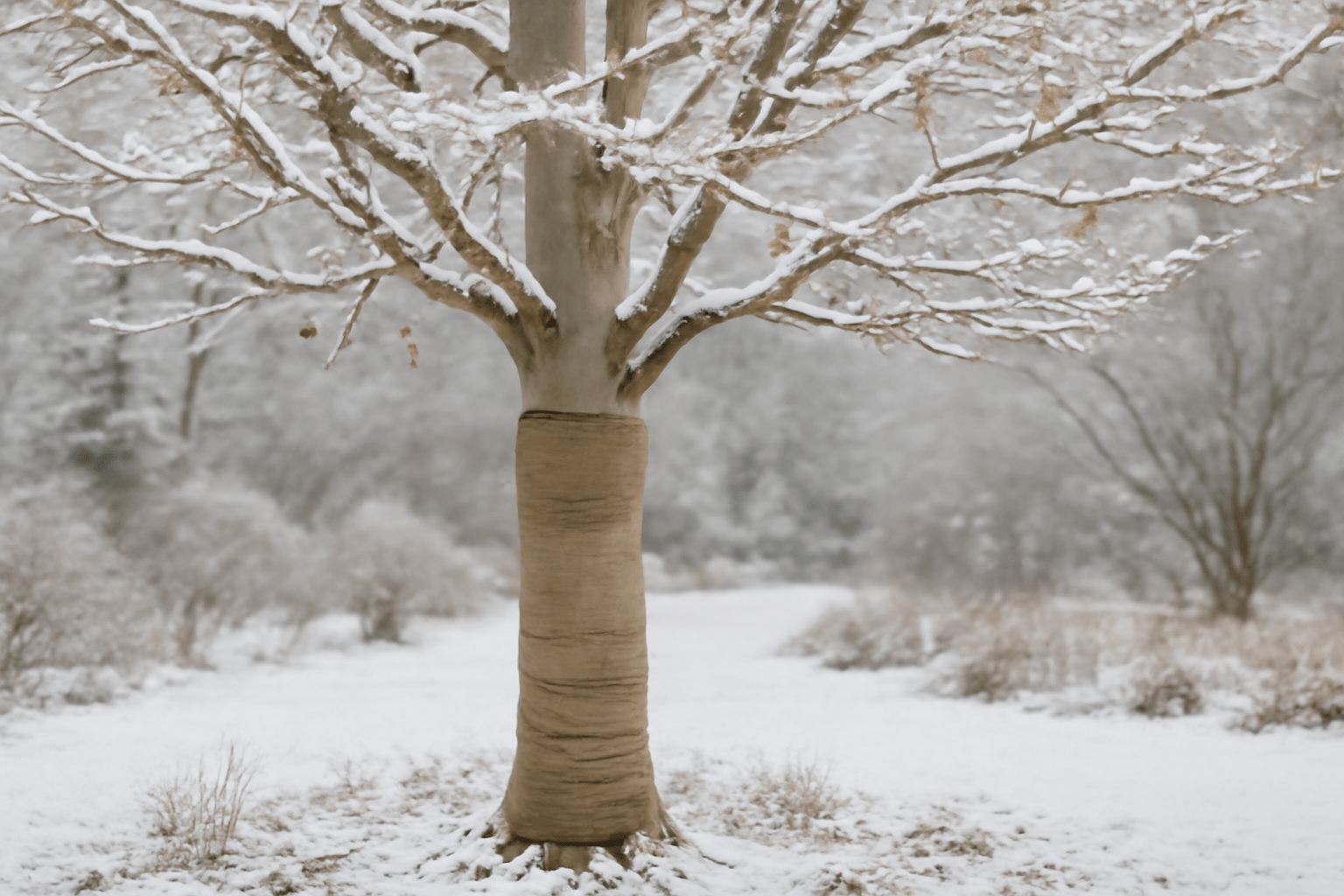
By following these seasonal care tips, your Michigan Beech tree will thrive year-round, growing strong and resilient for many years to come!
Troubleshooting Common Problems with Michigan Beech Trees 
Michigan Beech trees are a stunning addition to any landscape, but like all trees, they can face some challenges. Here’s how to identify and address common problems to ensure your tree thrives for years to come.
1. Leaf Spots and Discoloration 
If you notice brown spots or yellowing leaves, it could be a sign of fungal infections like Beech leaf disease (BLD). These spots may appear in early summer and can weaken the tree over time.
Solution: Prune any infected leaves and dispose of them properly (don’t compost them). If the problem persists, consider applying a fungicide specifically for Beech trees, following manufacturer instructions carefully.
2. Wilting or Drooping Leaves 
When the leaves begin to droop, it may signal water stress. Either too much water or too little can cause wilting.
Solution: Ensure the tree is in well-drained soil and water it regularly, especially during dry spells. However, avoid overwatering as this can lead to root rot. 
3. Pests and Insects 
Michigan Beech trees are prone to a variety of pests, including aphids, beetles, and scale insects. These bugs can weaken the tree by feeding on the sap and causing leaf distortion.
Solution: Inspect the tree regularly for signs of pests. If you find any, use an insecticidal soap or neem oil to treat the affected areas. For a heavy infestation, consider reaching out to a professional arborist.
4. Root Rot 
Root rot is caused by overly soggy soil and poor drainage, leading to a decline in tree health. This condition is often hard to detect until it’s too late.
Solution: Ensure your Beech tree is planted in well-draining soil. If you notice wilting or stunted growth, check the roots for a soft, mushy texture. If root rot is present, you may need to remove and replace the affected soil, ensuring the tree has proper drainage.
5. Poor Growth or Stunted Development 
If your tree is growing slower than expected, it could be due to nutrient deficiencies, poor soil quality, or competition from nearby plants.
Solution: Test your soil for nutrients and add a balanced fertilizer if necessary. Make sure your Beech tree has enough space to grow and isn’t competing with other plants for resources. A light mulch around the base can help retain moisture and keep the roots cool during summer.
By keeping an eye out for these common issues and taking quick action, you can ensure your Michigan Beech tree stays healthy and continues to add beauty to your landscape for years to come.
Conclusion
In conclusion, caring for your Michigan Beech tree is a rewarding endeavor that requires attention to its specific needs, from planting to seasonal care. By providing the right location, soil, water, and protection from pests and diseases, you’re setting the foundation for a long-lasting, thriving tree. Regular maintenance, such as pruning, mulching, and proper watering, will ensure your tree remains healthy year after year.
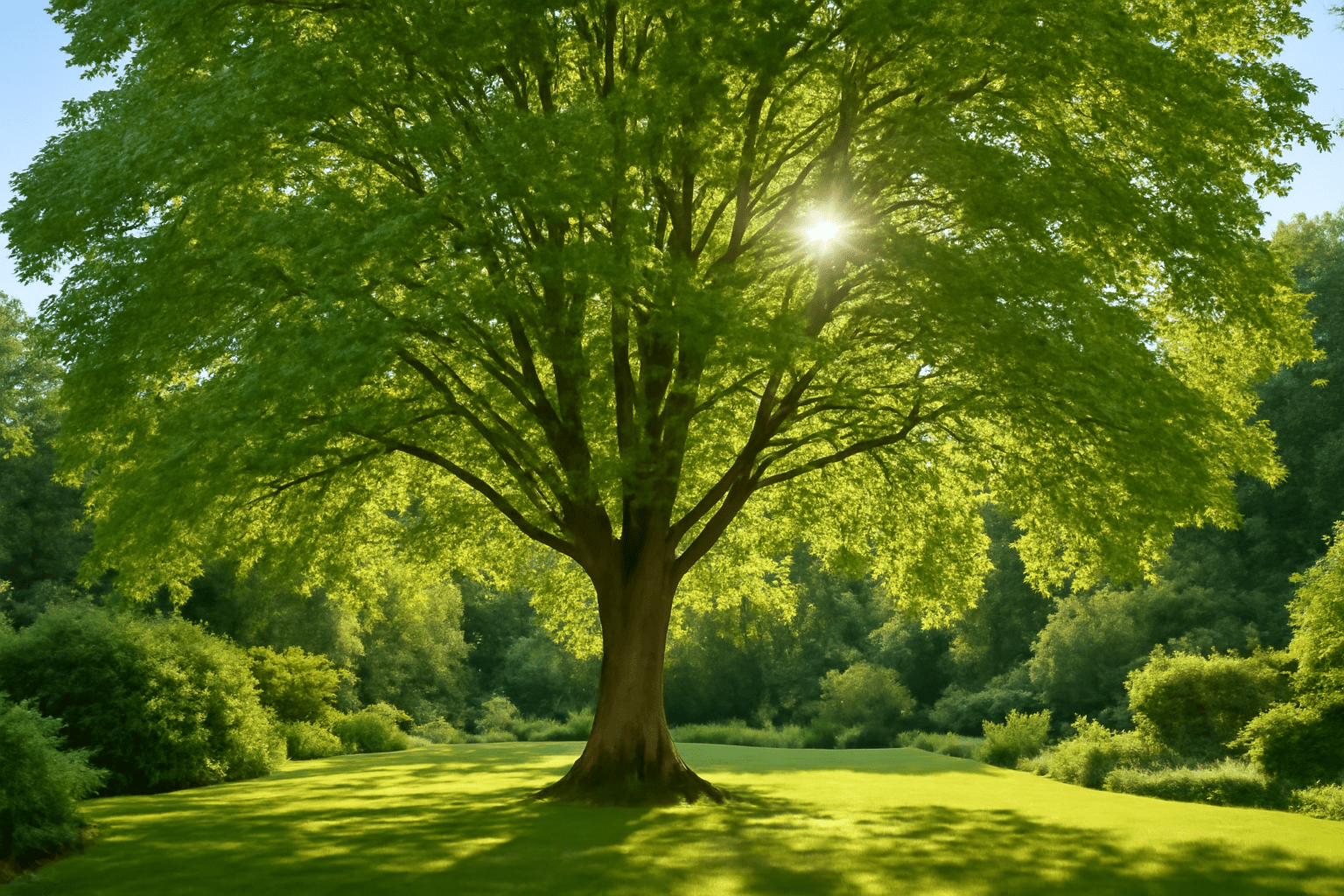
With the tips shared in this guide, you can confidently nurture your Michigan Beech tree and enjoy its beauty for generations to come. By understanding and meeting the unique needs of your tree, you’ll not only enhance your landscape but also contribute positively to the environment. Happy gardening, and here’s to a flourishing Michigan Beech tree!
Frequently Asked Questions(FAQ)
How fast do Michigan Beech trees grow?
Michigan Beech trees grow at a moderate pace of about 12-24 inches per year. This growth rate can be influenced by factors such as soil quality, sunlight, and water availability.
Can I grow a Michigan Beech tree in clay soil?
While Michigan Beech trees prefer well-draining, slightly acidic soils, they can tolerate clay soils if improved with organic matter. Ensure proper soil preparation to promote root growth and prevent waterlogging.
How do I know if my Michigan Beech tree is healthy?
A healthy Michigan Beech tree has vibrant green leaves, strong branches, and steady growth. Signs of distress include yellowing leaves, wilting, or thin, weak branches, which could indicate problems like nutrient deficiencies or pest infestations.
When is the best time to prune a Michigan Beech tree?
Prune your Michigan Beech tree in late winter or early spring before the growing season begins. This helps avoid stress and encourages the tree to put more energy into new growth.
How much water does a Michigan Beech tree need?
Water your Michigan Beech tree deeply, especially during dry periods. Ensure the soil remains moist but not soggy, as overwatering can lead to root rot. A good rule of thumb is to water once a week, depending on weather conditions.
What should I do if my Michigan Beech tree leaves turn yellow?
Yellowing leaves can be a sign of overwatering, poor drainage, or a nutrient deficiency. Check the soil’s moisture level, ensure proper drainage, and consider fertilizing with a balanced fertilizer if needed.
How can I protect my Michigan Beech tree from pests?
Common pests like aphids and leaf miners can damage Michigan Beech trees. Regularly inspect the tree for pests and use natural solutions like insecticidal soap or introduce beneficial insects like ladybugs to control pest populations.
How can I improve the soil for my Michigan Beech tree?
Michigan Beech trees thrive in slightly acidic, well-draining soil. To improve soil, add organic matter such as compost or mulch around the base of the tree. This helps retain moisture, prevents soil erosion, and provides essential nutrients.




